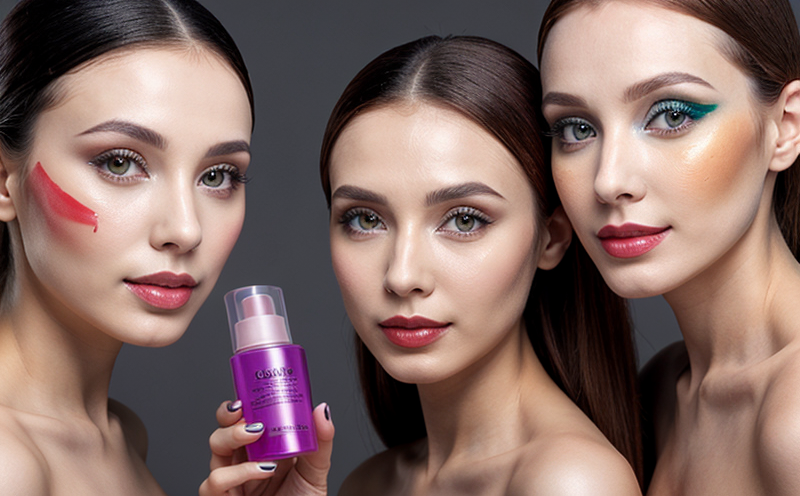Human Volunteer Tolerance Testing in Cosmetics
The human volunteer tolerance testing of cosmetics is a critical component of ensuring product safety and efficacy. This testing involves recruiting volunteers who will apply the cosmetic to their skin or mucous membranes to assess how well-tolerated it is by the human body under realistic conditions.
Human tolerance tests are essential for several reasons. They provide real-world data on the potential irritancy, sensitization, and adverse effects of a product before its release to the market. This helps manufacturers identify any issues early in the development process, allowing them to make necessary adjustments or improvements. Additionally, these tests contribute significantly to consumer trust by demonstrating that the product has been rigorously evaluated for safety.
The testing protocol typically follows internationally recognized standards such as ISO 10993-11 and IEC TR 62768-4, which outline best practices for conducting human volunteer tolerance tests. These guidelines ensure consistency across different laboratories worldwide, providing reliable and comparable results. The tests are conducted in controlled environments to simulate normal usage conditions, ensuring that the findings accurately reflect real-world scenarios.
During a typical test, volunteers undergo careful screening to ensure they meet specific eligibility criteria set forth by regulatory authorities like the FDA or EU Cosmetics Regulation. Once selected, participants apply the cosmetic sample according to prescribed instructions and report any adverse reactions experienced during the observation period. The data collected from these tests is then analyzed thoroughly to determine whether further investigation into certain aspects of the product may be required.
It's important to note that while human volunteer tolerance testing offers valuable insights, it should be complemented with other types of safety assessments such as in vitro methods and computational modeling. Together, these approaches provide a more comprehensive understanding of potential risks associated with new cosmetic formulations.
- International Standards: Adherence to ISO 10993-11 ensures compliance with global regulatory requirements.
- Data Collection: Volunteers report adverse effects observed during the test period.
- Analytical Methods: Data is analyzed using advanced statistical techniques to draw meaningful conclusions.
Why It Matters
The importance of human volunteer tolerance testing cannot be overstated when it comes to protecting public health and maintaining consumer confidence in cosmetic products. By conducting these tests, manufacturers can identify potential safety concerns early on, ensuring that only safe and effective products reach the marketplace.
Consumer trust plays a crucial role in shaping brand reputation and loyalty. When consumers know their favorite brands are committed to rigorous testing protocols like human volunteer tolerance tests, they feel more secure about purchasing and using those products. This not only enhances customer satisfaction but also fosters long-term relationships between companies and their customers.
From a regulatory perspective, compliance with established standards helps streamline product approval processes and reduces the likelihood of recalls or legal challenges post-launch. Regulatory bodies rely heavily on scientifically sound data generated through such tests when making informed decisions regarding new cosmetic products entering the market.
In summary, human volunteer tolerance testing serves multiple purposes: it enhances safety, builds trust, supports regulatory compliance, and ultimately contributes to overall quality assurance within the cosmetics industry.
Applied Standards
The International Organization for Standardization (ISO) has developed a series of standards specifically addressing aspects related to cosmetic product safety testing. One such standard is ISO 10993-11, which provides guidance on the selection and conduct of human volunteer tolerance tests.
According to ISO 10993-11, the primary objective of these tests is to evaluate the local skin irritation potential of cosmetic products. The standard outlines detailed procedures for selecting appropriate volunteers based on age, gender distribution, and previous history relevant to the test substance. It also specifies criteria for determining eligibility, including absence of pre-existing dermatitis or other conditions that could affect interpretation of results.
The application of ISO 10993-11 ensures consistency in methodology across various laboratories performing similar tests globally. This uniformity is essential not only for inter-laboratory comparisons but also for regulatory purposes where consistent criteria are needed to assess compliance with international regulations.
Additionally, IEC TR 62768-4 provides supplementary guidance on the evaluation of biocompatibility aspects of electrical and electronic equipment including cosmetics that come into direct contact with human skin. While this is primarily aimed at electronic devices, its principles can be applied to cosmetic products as well.
By adhering to these internationally recognized standards, laboratories ensure that their testing methods are up-to-date and aligned with industry best practices.
Quality and Reliability Assurance
- Consistent Methodology: Adherence to ISO 10993-11 ensures consistent testing procedures across different laboratories.
- Data Validation: Rigorous validation of data collected from human volunteer tolerance tests enhances reliability.
- Inter-Laboratory Comparability: Standardized methods facilitate reliable comparisons between results obtained by various labs.
The quality and reliability assurance of human volunteer tolerance testing are paramount for ensuring accurate and reproducible outcomes. Consistent methodology across laboratories ensures that all tests conducted meet the same high standards, thereby enhancing comparability of data internationally.
Data validation is another critical aspect of maintaining quality in these assessments. By independently verifying results using additional techniques or methods, labs can confirm the accuracy of their findings. This step also helps detect any inconsistencies or errors early on, ensuring that only reliable data are reported back to manufacturers.
Inter-laboratory comparability further strengthens the reliability of human volunteer tolerance tests by allowing multiple facilities worldwide to produce consistent results when evaluating similar products. This collaborative approach fosters trust among stakeholders and contributes significantly towards establishing a robust framework for cosmetic product safety evaluation.





